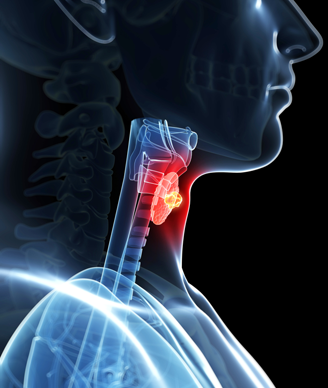Radioactive Iodine Overused in Papillary Thyroid Cancer
Despite well-established guidelines from the American Thyroid Association, radioactive iodine continues to be overused for some forms of thyroid cancer.
Radioactive iodine continues to be overused in thyroid cancer. Image © Sebastian Kaulitzki/Shutterstock.com

Notwithstanding well-established guidelines from the American Thyroid Association (ATA), radioactive iodine continues to be overused for some forms of thyroid cancer, especially in community hospitals, according to a research letter published online in JAMA Internal Medicine.
According to a retrospective analysis of cases from 1998–2011 from the National Cancer Database (NCD), nearly one-quarter of patients with papillary thyroid microcarcinoma received adjuvant radioactive iodine, even though the treatment is not recommended for localized tumors of 1 cm or less.
“Anaplastic or medullary thyroid cancer do not take up iodine at all, and it is incredibly rare for microcarcinomas to metastasize and become a problem, which occurs in fewer than 1% of cases,” said Sanziana Roman, MD, professor of surgery at Duke University, one of the authors of the article. Radioactive iodine is associated with side effects, decreased quality of life, costs, and even secondary cancers, she explained.
“Surgery is the main treatment for this cancer, and resection is enough in most cases of microcarcinoma,” added Roman.
In the study, researchers reviewed data from all patients with anaplastic and medullary thyroid cancer contained in the NCD (which is kept by the American College of Surgeons, and encompasses 85% of all cases of thyroid cancer in the United States). The data was cross-checked with cases from the Surveillance, Epidemiology, and End Results (SEER) database.
Roman and colleagues found that radioactive iodine was used in 49 out of 3,095 patients with anaplastic carcinoma (1.6%), as well as 217 out of 6,375 patients with medullary carcinoma (3.4%). However, inappropriate use of radioactive iodine was alarmingly high among patients with papillary thyroid microcarcinoma: 14,146 out of 60,586 patients (23.3%) received the treatment when it wasn’t appropriate.
“I think it’s about worry; people are just concerned about these cases, and uncomfortable with some of these cancers, so they are overtreating them,” said Roman.
Use of radioactive iodine did decline in some settings over time, the researchers found. In academic centers, use declined in cases of papillary thyroid microcarcinoma from 25% in 2004 to 13.6% in 2011 (P < .001), and in comprehensive community hospitals from 28.4% in 2004 to 17.8% in 2011 (P < .001). The decline in community hospitals, from 21.5% to 18.5% in the same years, was not statistically significant (P = .26).
“One of the potential reasons we observed these deviations is the possibility that people are not aware of the guidelines,” said Roman. “We don’t have surgeon level data, but usually it is an endocrinologist who uses radioactive iodine, or it could be a nuclear medicine physician, she said.
The guidelines were revised this year, but the new version has not yet been released, Roman noted. The incidence of thyroid tumors smaller than 1 cm has been increasing globally over the past 20 years, and is expected to be the third most common cancer in women by 2020, she added.
Newsletter
Stay up to date on recent advances in the multidisciplinary approach to cancer.